Vital Records Tour-
Compare and Contrast the Birth/Baptismal Records of Three Central-Eastern
Empires
In reviewing the 18th and 19th century time period, the
structure and layout of the records from Galicia/Halychyna are similar to other
regions in the Austrian (after 1867 Austro-Hungarian) Empire. This fact
certainly helps anyone researching other family lines from different parts of
the Empire, such as today's Czech Republic, Slovakia, Hungary, Croatia, etc.
(Languages may be different depending on region and date.)
In comparison to other Central and Eastern European
empires of the time, the records of the Austrian Empire are the quickest to
understand and the easiest to read! Take a look at some samples of records
from the three largest and most populous empires in Central and Eastern
Europe...the Austrian Empire (Austro-Hungarian Empire), the Russian Empire, and
the Prussian (German) Empire.
Polish language birth/baptismal record from the
Russian Empire, from what is in today's Poland.
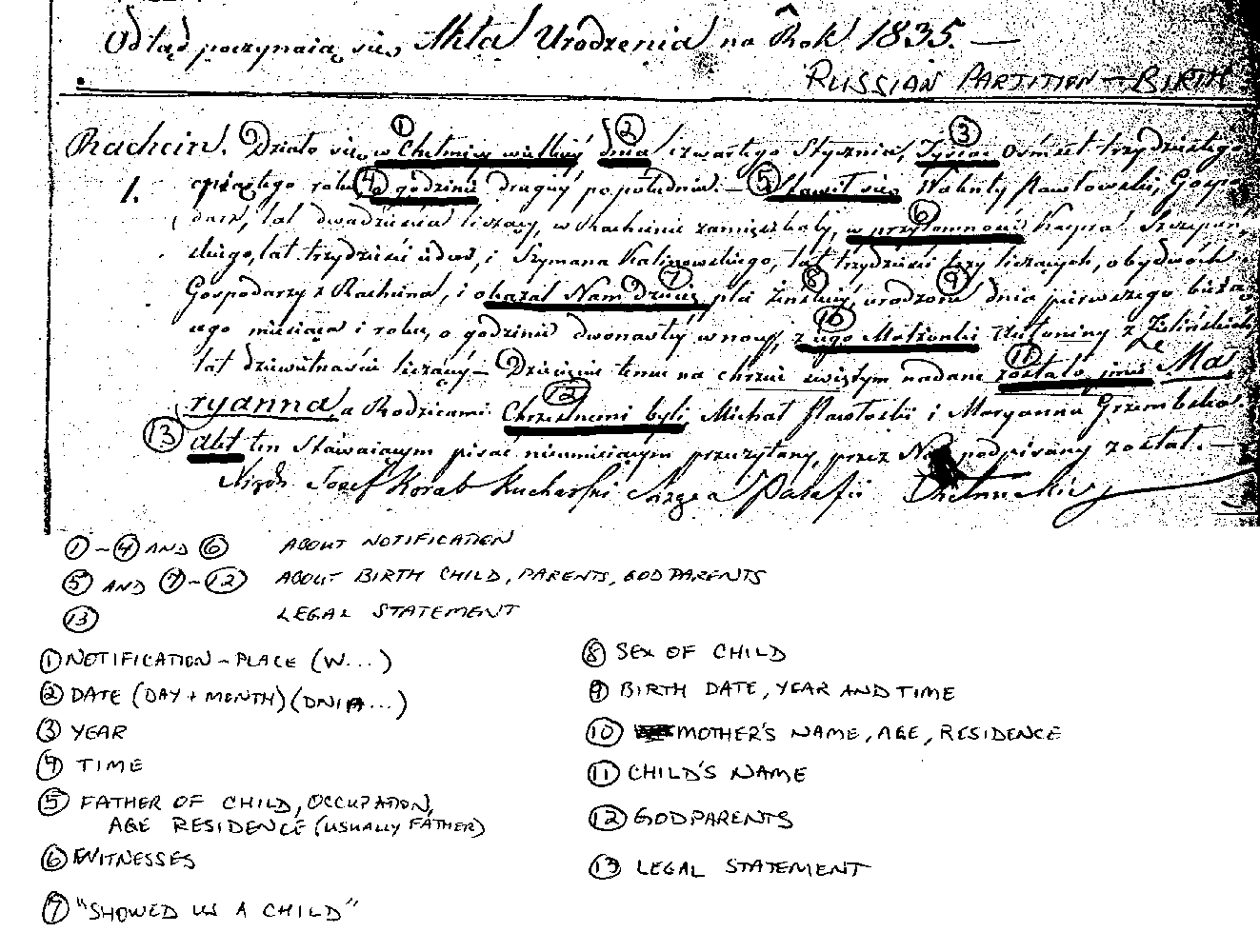
Russian language birth/baptismal record from the
Russian Empire. As Latin was the lingua franca of the
Catholic Austrian Empire, Russian was the lingua franca for most of the
massive Russian Empire. And after a tsarist decree in 1868, Russian was
required for all vital records throughout the entire empire...including places
where there wasn't a single ethnic Russian in residence!
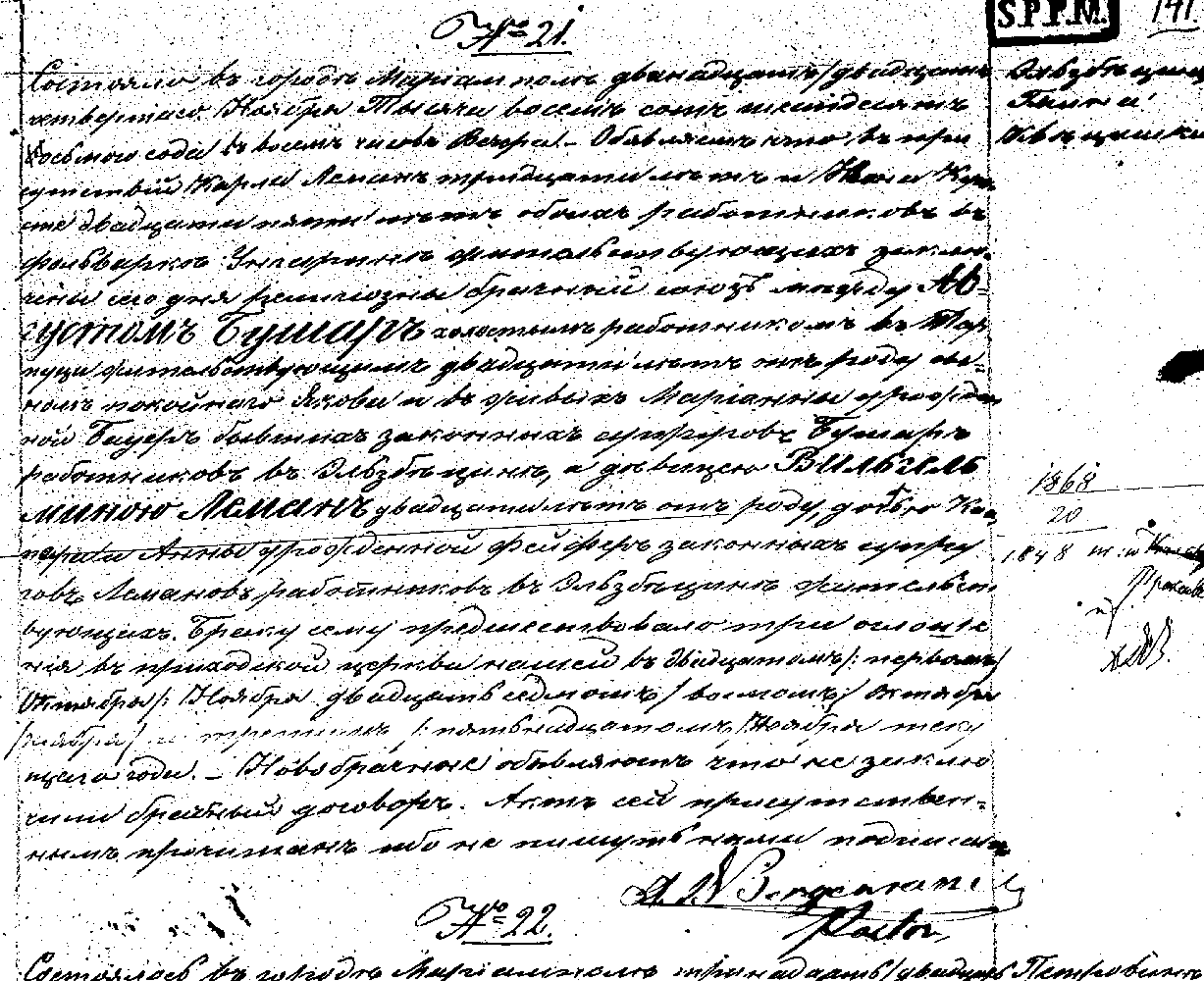
The Russian Empire had its own style of a column
format. But take a look at the their version and compare it to the
simplicity of the Austrian Empire's version. The middle three columns are:
"Status, name, patronymic (based on father's first name) and last name of the
parents, and religion", then "Status, name, patronymic and last name of
godparents", and "Who administered the sacrament of baptism".
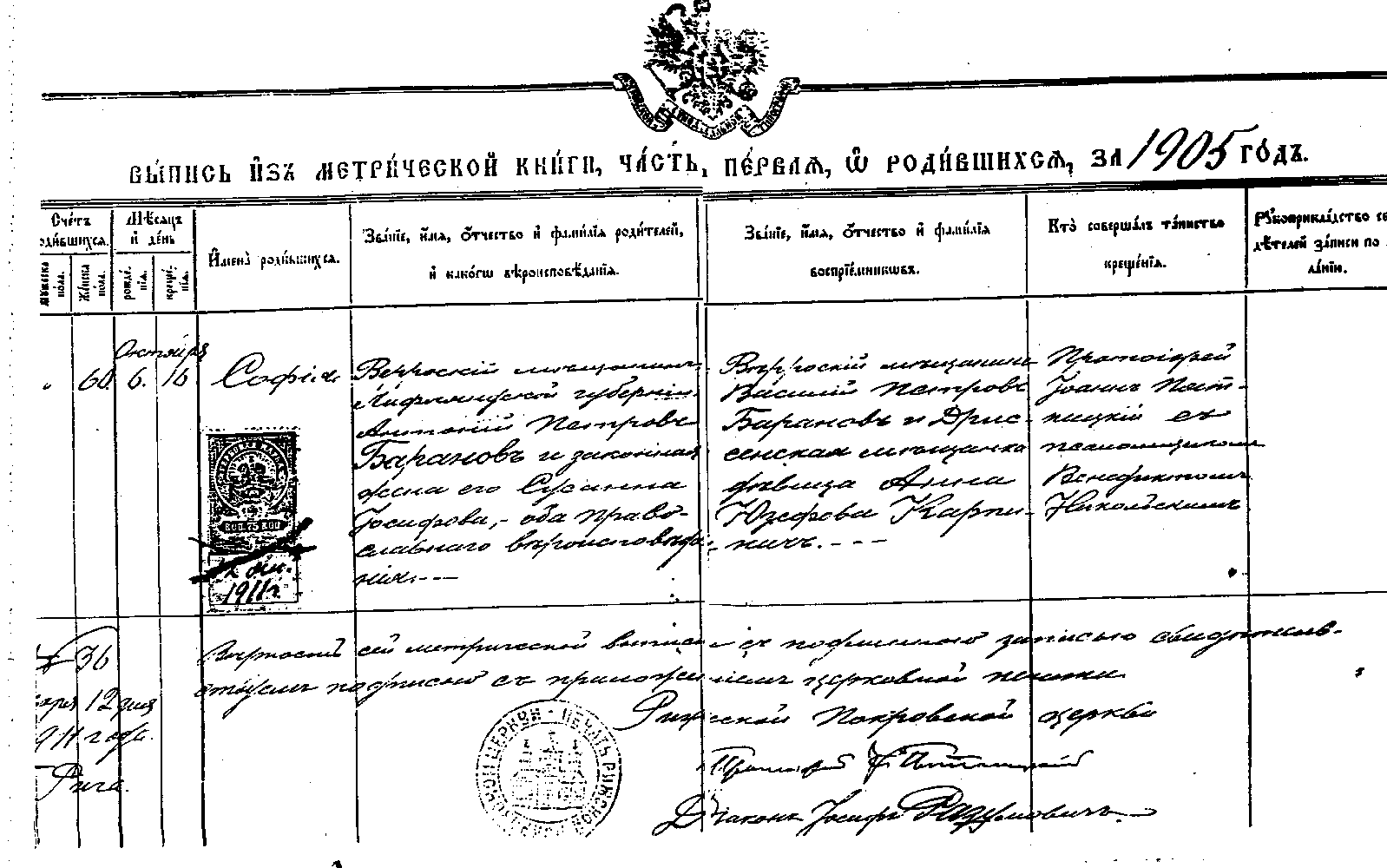
In the case of the Prussian Empire, there was no single
predominate document type. There are church records in both paragraph
format and column format (the column format being similar and easy-to-read as
the column format in Galicia/Halychyna). But unique to that Empire is the
following civil registration form, which came to use at different times in the
19th Century throughout the empire. (In the areas of the Prussian Empire
now located in Poland, the civil registration format was used starting as late
as 1874. These records were kept in addition to the church records,
though not according to church/parish jurisdiction, but to the administrative
county, or
Kreis in German.) Although it's great to have an additional copy of a
record, these civil registration forms were written in the challenging old style
"fraktur" German.
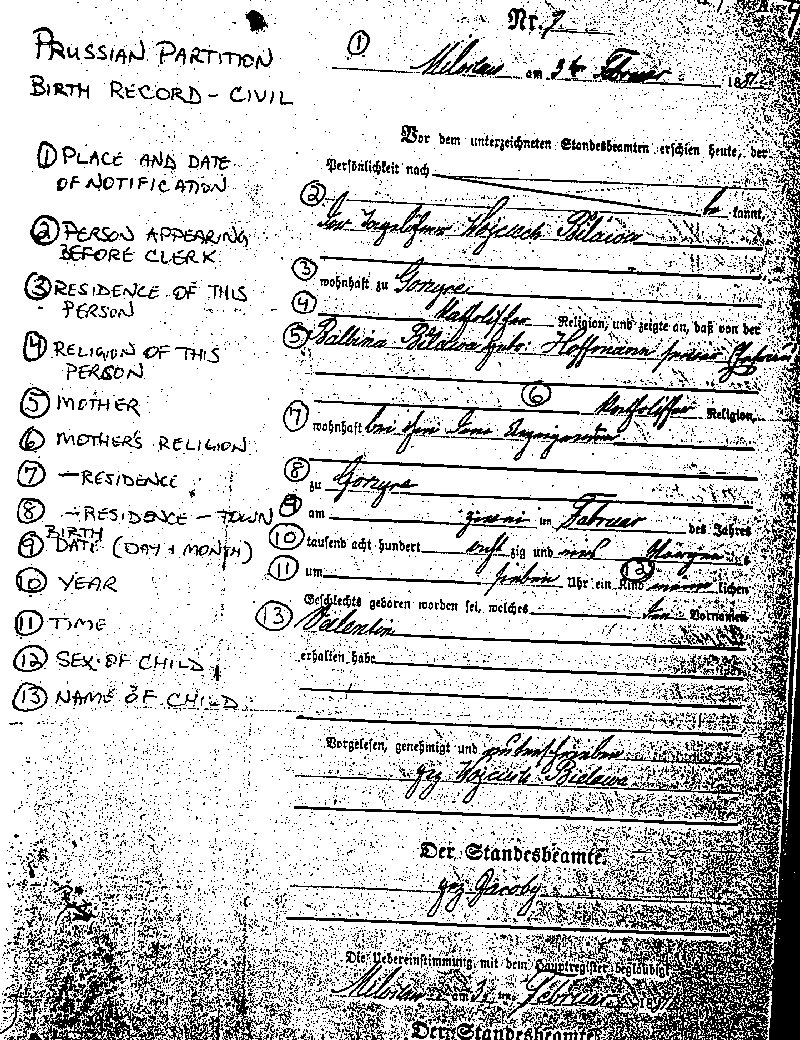
Compare all the above to the simple, easy-to-use
"classic"
style from Galicia/Halychyna!
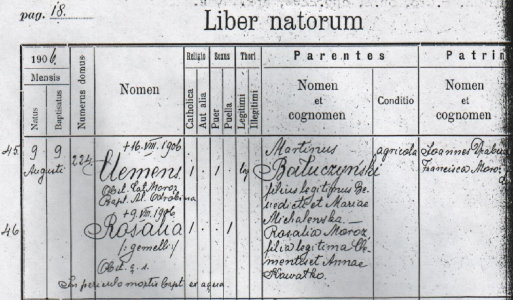
from village of Usznia, Roman Catholic parish of
Biały Kamień, 1860.
Though the format does look pretty easy, it doesn't mean
that special care and some translation skills aren't needed. For a
detailed review and step-by-step analysis, visit my
tutorial on the birth/baptismal record.
|